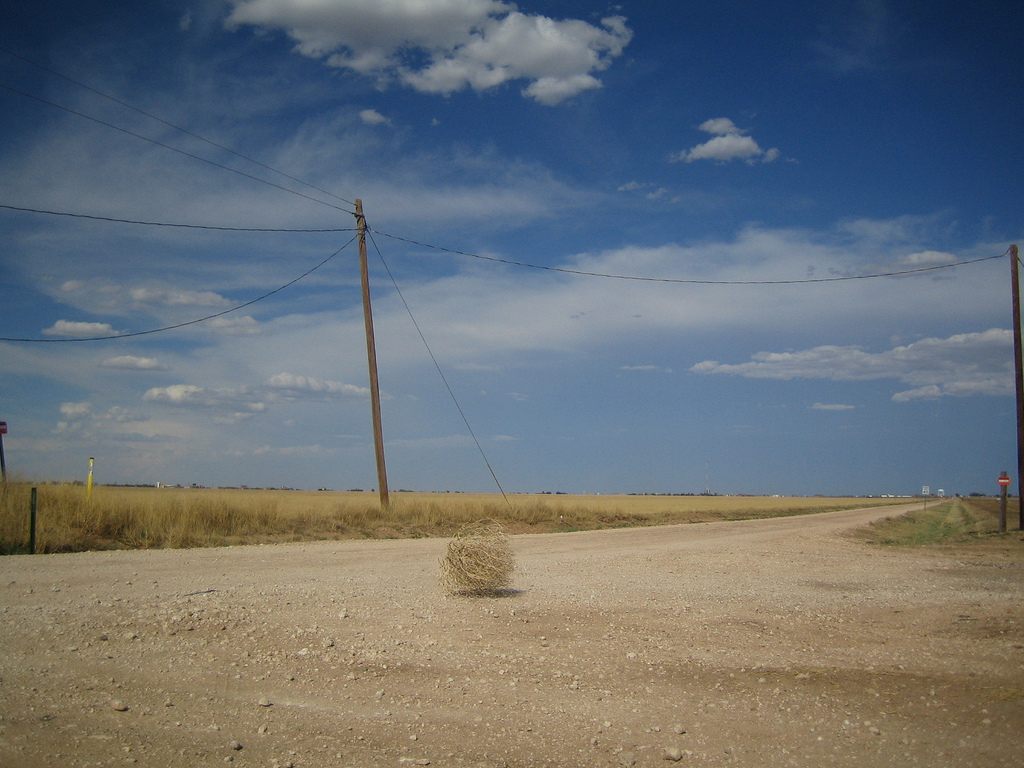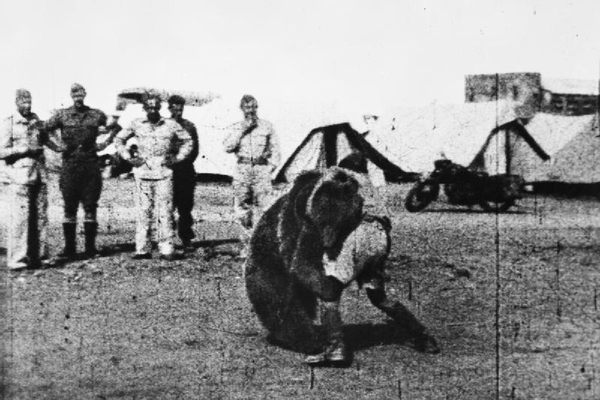Only A Fungus Can Prevent These Extreme Tumbleweed Situations

A tumbleweed prepares to make its move. (Photo: Jez Arnold/Flickr)
As Old West villains go, the tumbleweed doesn’t look the part. It lacks a big mustache or a low kerchief. It’s more likely to be seen bouncing forlornly past the saloon standoff than actively participating in a barroom brawl.
But ask a farmer, a transportation employee, or even a nuclear plant facilitator, and they won’t pull punches: tumbleweed is a menace. The last couple of years have seen a bumper crop, which has caused extra municipal problems: in the past few weeks alone, tumbleweeds have stampeded across a frozen lake in Montana, swarmed a neighborhood in Colorado, and built a seven-foot-tall wall in front of an Albuquerque gas station. Last year, a particularly aggressive gang buried much of Clovis, New Mexico, forcing residents to dig themselves out.
So much so that the U.S. Department of Agriculture has been working for decades to roll most of them out of town for good. “The tumbleweed is a symbol of the Old West and cowboys, and so people think of it as an American icon,” says Lincoln Smith, a USDA entomologist who studies biological plant control. ”But it’s actually an Asian plant, and it didn’t show up until the late 1800s.”
It arrived in South Dakota with Ukrainian settlers, who toted contaminated bags of flax seeds. In order to plant what they thought was just flax, these same settlers mowed down huge swaths of prairie grass, inadvertently creating an ideal environment for a weed on the go. Free to inhabit a wide open landscape with few natural enemies, the tumbleweeds did what they do best—somersaulted from town to town, scattering seeds willy-nilly. Meanwhile, the land got flatter and more developed.
By the end of the century, all of the Midwest and clear through to California was essentially a tumbleweed gymnasium.
This has been bad news for agriculture ever since. If you were a plant designer commissioned to mess with farmers, you would probably come up with something like a tumbleweed. When germinating, tumbleweed seedlings outcompete native plants, and suck up enough water to parch neighboring crops. After they drop from their stems, the vagabond husks often rove in packs, clogging irrigation systems, carrying bugs and diseases, and taking up space where cows could be.
Farmers spent decades burning, crushing, and shooing away the weeds, “without much success,” reports a 1934 New York Times article. During the dust bowl, they tried to brine and eat them. The advent of herbicides made frustrated farmers trigger-happy, but because there are a variety of tumbleweed species, a herbicide that kills one might simultaneously encourage others to build up resistance, making things worse in the long term, explains Smith.

A ”tumbleweed catcher” does its job in Salt Lake City in 1972. (Photo: Gianni Pettena/WikiCommons CC BY-SA 3.0)
So in the 1980s, the government tried something new: bugs. “If you go back to Central Asia, where these plants originated, tumbleweed is generally not a problem like it is here,” says Smith. “You don’t see giant plants like you see in the western United States.” Scientists began searching around its native habitat to see if they could deduce which pathogens were brewing—to fight the plant on its own terms.
Thus far, the moths and flies tasked with this duty have failed to thrive in the United States. Some of the new species Smith and others have come up with (notably a mite and a couple of fungi) are effective against some types of tumbleweed. But fighting introduced species with introduced species requires approval from many different parties, and regulatory bodies have thus far kept this plan from rolling on.
In the meantime, unforeseen tumbleweed situations have begun cropping up. Because tumbleweed thrives in disrupted landscapes, it gravitates not just towards farmlands, but to more fraught spaces–residential areas, highways, and even nuclear testing facilities, where the seedlings suck up radioactive waste through their roots and must be pulverized before they roll off and contaminate everything. Their erratic movements confuse self-driving cars, who tend to make “a full emergency stop” for them.
The hazards of tumbleweeds are only multiplying as the plants keep growing. “It’s more than just an annoyance because dry tumbleweeds are extremely flammable,” says Smith, “If you had a pile of them around your house, that’d be a big risk for fire.” These weirder dangers make the research stakes even higher, and researchers continue to hope that the small spores insects turn out to be big (and precise) guns. Whether this town is big enough for the both of ‘em remains to be seen.
Naturecultures is a weekly column that explores the changing relationships between humanity and wilder things. Have something you want covered (or uncovered)? Send tips to [email protected].







Follow us on Twitter to get the latest on the world's hidden wonders.
Like us on Facebook to get the latest on the world's hidden wonders.
Follow us on Twitter Like us on Facebook